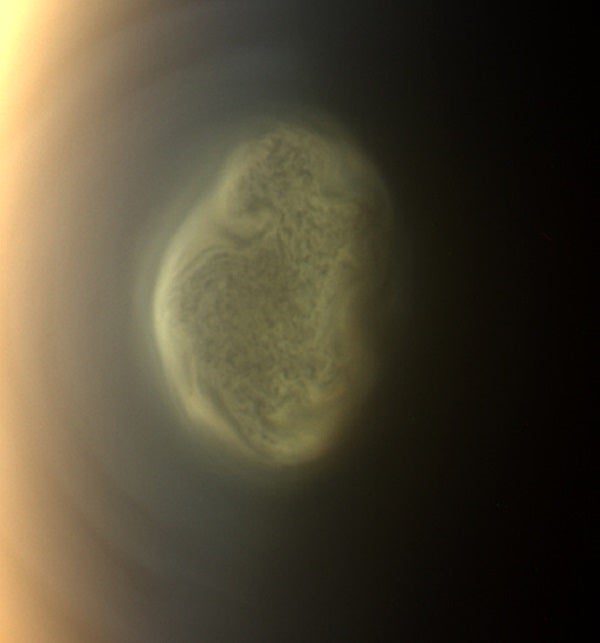On most worlds with atmospheres, including Earth, Mars, and Venus, “hotspots” develop at high altitudes above the poles during the winter as sinking air becomes compressed and heats up. While such a hotspot did develop on Titan in 2009 as winter began, temperatures in the south polar atmosphere later plummeted in 2012, falling as low as –244 degrees Fahrenheit (–153 degrees Celsius) through late 2015. Only in 2016 did the area begin to warm up again.
A paper published November 21 in Nature Communications has an explanation: “Exotic” chemical reactions between Titan’s atmosphere and incoming sunlight produce byproducts such as ethane, acetylene, hydrogen cyanide, and cyanoacetylene, which cool the atmosphere. Though they are created at high altitudes, subsequent atmospheric circulation can dramatically change the abundance of these gases in the moon’s atmosphere. When cool air began sinking as winter set in on the moon’s southern pole, it carried these gases deeper and led to greater cooling.
“This effect is so far unique in the solar system and is only possible because of Titan’s exotic atmospheric chemistry,” said lead author Nick Teanby of the University of Bristol’s School of Earth Sciences in a press release. Though unique in our solar system, this atmospheric behavior might be more widespread elsewhere. “A similar effect could also be occurring in many exoplanet atmospheres having implications for cloud formation and atmospheric dynamics,” he added.
Planetary scientists may get a closer look at Titan in the not-so-distant future. NASA has just approved funding for the further development of the Dragonfly mission, a combination quadcopter and lander destined for Titan. While (if selected) Dragonfly’s main goal would be to explore Titan’s chemistry and habitability, its data could include details about its atmospheric behavior as well.










